I’ve spent my career working behind the scenes across the firearm industry making connections
and building brands. I do my best to avoid the limelight, supporting the folks who are driving
the 2A community forward.
Making the Vortakt Connection
This story began this past SHOT Show, where I was working at the U.S. Concealed Carry
Association booth as part of the USCCA Official Partner Marketing team. I’d been a long time
listener of “The Everyday Sniper” and had managed a few ad accounts on the platform over the
years, so I had a fairly solid baseline understanding of the Sniper’s Hide brand and the history of
the website.
While my 9-5 occupation currently finds me working more with handgun and carbine
curriculum, my true passion (and career background) has been in the precision rifle space. I still
contract with a handful of different manufacturers in my off time to stay active in that market.
Living in southeast Wisconsin, I’ve had the pleasure of working with a few different barrel
manufacturers over the years. The diversity of project work offered by these manufacturers is
never-ending, as most of them support a variety of different firearm platforms.
I’ve had the pleasure of doing some consulting work with Vortakt Barrel Works over the past
few years, a fascinating experience that has opened my eyes to the future of OEM barrel
manufacturing. By leveraging automation technology and a constantly evolving product line of
button and cut-rifled barrels, Vortakt is uniquely positioned to deliver barrel manufacturing
solutions that can competitively support just about every pistol, rifle, and shotgun
manufacturer in existence.
Frank popped by the booth to discuss the ad campaign Vortakt was running on the Hide, and
the conversation veered toward curriculum development and instructor certification programs.
After a brief chat, we agreed to meet up for a class later in the year to compare notes on
training and education.
My History with Gravity Ballistics
Months passed and the Midwest weather took a turn for the better as summer kicked into
gear. Frank, the Vortakt gang, and I arranged for a brief two-day class in Ohio over Labor Day
weekend to explore the simplicity of Gravity Ballistics.
The Gravity Ballistics concept wasn’t entirely new to me. A few years back I’d leveraged a
Sniper’s Hide worksheet as part of a “Precision Rifle Putt-Putt” concept, which was a bit of a
hybrid discpline tying in elements of both sporting clays and PRS-type competition. Precision
Rifle Putt-Putt featured a half dozen stages fired at targets positioned from 100-600 yards that
were rotated on a monthly basis. We had originally set it up as a self-scored and untimed
course of fire with the intent to make it an excellent choice for shooters interested in practicing
for PRS style matches, or new shooters just getting involved with the sport.
It wasn’t long until we discovered that most of the shooters who showed up to Precision Rifle
Putt-Putt didn’t come to the event with solid velocity numbers and viable DOPE, which made it
a bit of a struggle to get everyone dialed in for the full course of fire. What was our answer to
that problem? Weaponized Math!
Weaponized Math has continued to evolve and has since been rebranded as “Gravity Ballistics”.
Fascinated by the concept, the Vortakt crew and I decided to send a few folks out to take a
Gravity Ballistics class next time he was up in our neck of the woods.
Preparing for the Gravity Ballistics Class
With that concept in mind, Garrett Fravert (Vortakt’s Manufacturing Engineer) and I tried to
approach our class from a new shooter’s perspective. We spun up a pair of Vortakt’s 400 Series
pre-fit barrels (one chambered in 6mm GT, the other in 6XC) for the class, zeroing them at 100
yards and bringing them along with no pre-existing DOPE cards or data built out in our ballistic
calculators.
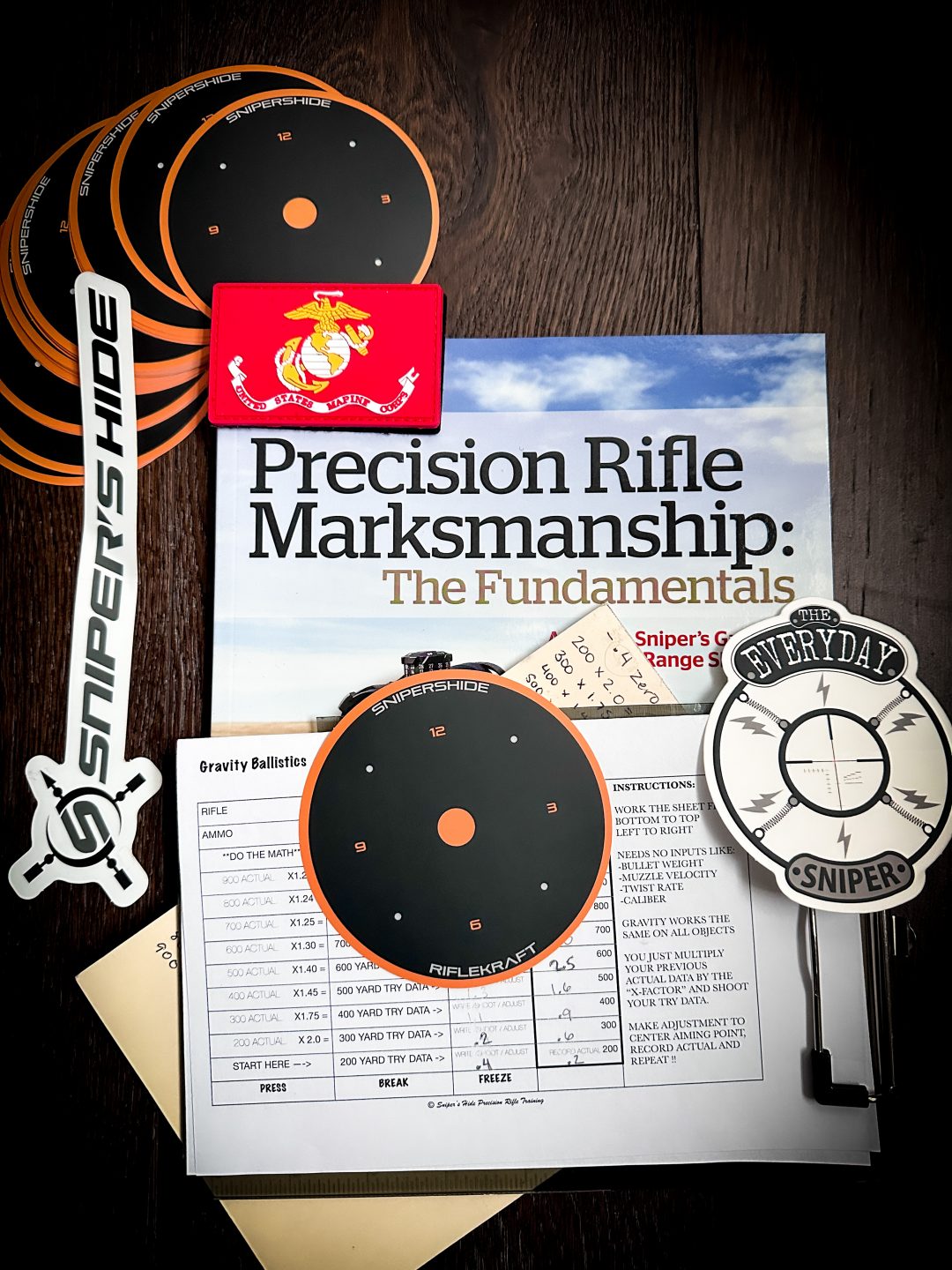
While we hadn’t done much in the way of load development (I was running factory 6mm GT
ammo and Garrett had spun his barrel on the day prior with a known handload recipe), I had
spent a bit of time reading through the Precision Rifle Marksmanship: The Fundamentals before
I had arrived. It breaks down the principles of Frank’s class in an easily digestible manner,
weaving in some storytelling throughout to keep it an engaging (and sometimes entertaining)
read. If you plan on signing up for one of these two- or three-day classes, I highly recommend
giving this book a read. It’ll definitely serve to make the class an even more fulfilling experience!
The Gravity Ballistics Classroom Experience
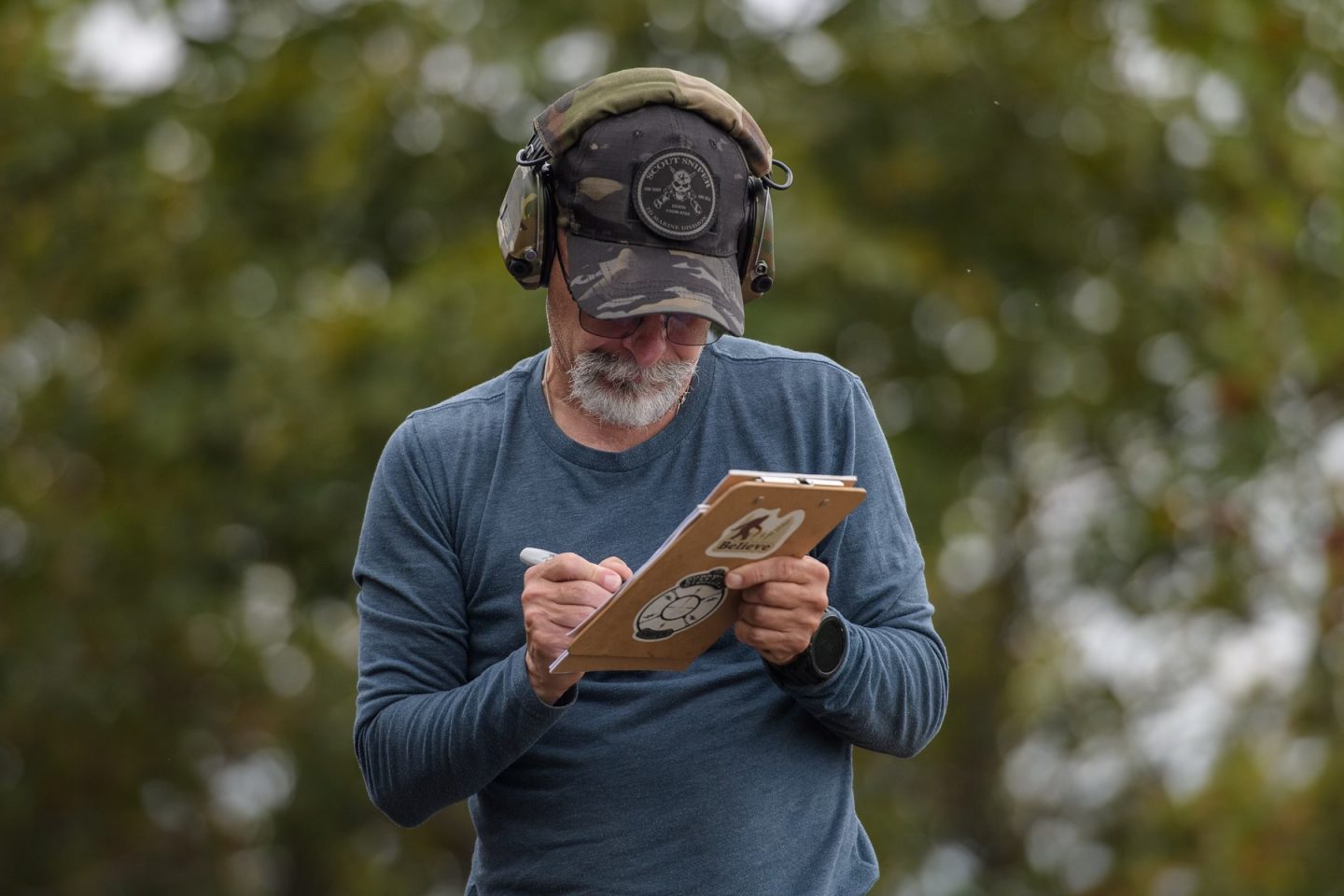
Garrett and I loaded up the truck and took off to the countryside surrounding Ashtebulah, Ohio,
where Frank had a private range lined up with steel set out to 1,100 yards. This location is one
of many ranges across the nation that Frank teaches at annually. No matter where you live in
the lower 48, there’s likely a Sniper’s Hide class in driving distance to your location at least once
annually.
Adjacent to the range was a small prefabricated cabin that served as our classroom for the
morning. Frank set up his projector and slide deck, walking us through a safety brief and each of
The lessons included in his curriculum. The course format was extremely well thought out and
digestible for beginners and advanced marksmen alike.
Both Garrett and I have spent a number of years competing in various disciplines, but the
content of the presentation was still relevant, as Frank’s wealth of knowledge drove the
conversation in and out of various different topics delivered through a slide deck presentation
broken up by informal Q&A sessions where Frank and Laura helped fill in the gaps anywhere we
had questions. The most fascinating (and unique) element to this period of instruction was an
overview and introduction to the Gravity Ballistics concept.
Gravity Ballistics is a simple solution to a complicated subject. Before a shooter engages a
target at distance for the first time, the question of “how far should I hold over?” is usually the
first one that crosses their mind. Experienced shooters may experience a certain level of
frustration calibrating ballistic apps, calculators, and chronographs in an ongoing effort to true
and validate their data.
Gravity Ballistics takes the guesswork out of the equation. By leveraging the most basic
Newtonian principles, this simple mathematical formula delivers predictable, repeatable,
precise, and accurate results.
Lunch Break and Extracurricular Entertainment
Before we got a chance to put this theory into practice, we broke for lunch at a local diner.
While Sniper’s Hide classes provide a great deal of classroom and range training, a great deal of
the value also relates to the conversations that take place outside of the training environments.
Classes are a great place to build relationships (with students and instructors alike), and both
Frank and Laura leaned into this concept wholeheartedly, swapping plenty of entertaining
stories, sharing insights, and in general making the trip across the Midwest a very enjoyable
experience. This experience and camaraderie extends well beyond midday lunch breaks, often
extending late into the evening at local watering holes. One thing is for sure, if you’re signing up
for Frank’s classes, there is no shortage of good food, drink, or entertaining dialogue!
The Gravity Ballistics Range Experience
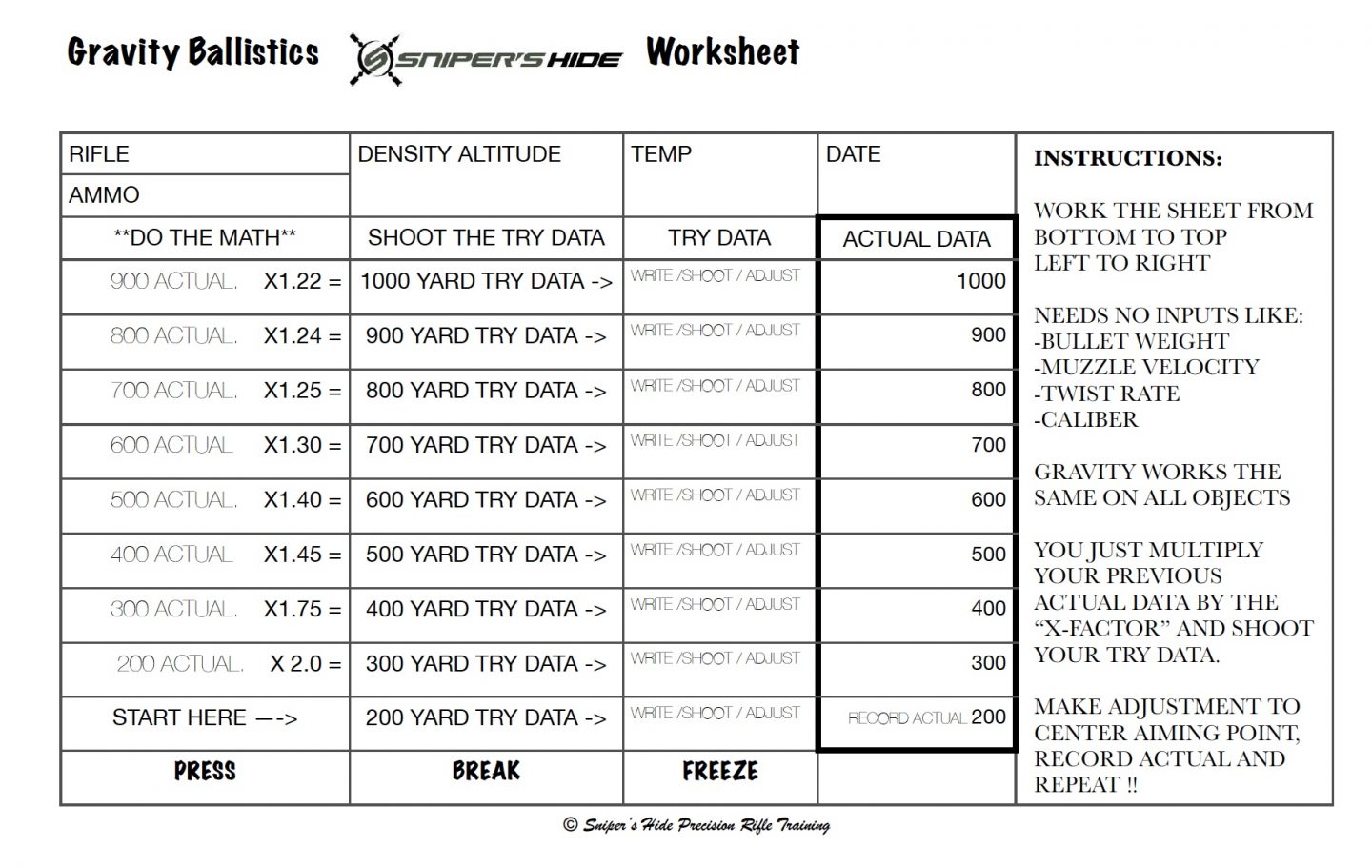
Classroom learning is a great way to digest information, but it’s no direct substitute for
seeing the results manifest themselves downrange. After lunch we returned to the range,
Garrett and I broke out our rifles and equipment for a little practical application.
The Rifles
Both Garrett and I had built our rifles around Vortakt Barrel Works 400 Series 6mm barrel
blanks with a 1-8 twist. These hand-lapped, match-grade barrels are unique, in that they’re
the best barrels you can’t buy.
Vortakt operates exclusively as an OEM supplier to rifle, pistol, and shotgun manufacturers,
which means that while there’s a fairly good chance you may have a Vortakt barrel or two in
your collection, it’ll be sold under another manufacturer’s label. Their barrel blanks are
classified in a numerical system based on finishing operations and production methods,
ranging from 100 Series (which are mass-produced through a highly automated process), to
500 Series barrels (hand-lapped single-point cut rifled barrels that are run in smaller batch
quantities).
The 400 Series barrel blanks that Garrett and I used during this class are button-rifled, but
feature a bore finish and tolerances that directly compete against some of the top brands in
the industry.
Beyond that, Garrett and my rifle setups varied fairly significantly. Garrett’s build was
assembled around an American Rifle Company Mousingfield, with a 22” 6X-chambered barrel
threaded for an Area 419 Brake and his suppressor (I didn’t happen to catch the make and
model on that one). The rest of the build specifications were rounded out with a Tubb T7T
Trigger, Foundation Genesis stock, Nightforce ATACR (5-25×56 with MOA adjustments), and
Hawkins DBM.
The Rifle is on point with Gravity Ballistics
My build was chambered in 6mm GT with a pre-fit barrel mated to a Bighorn TL3, also threaded
for an Area 419 Hellfire muzzle brake. Pre-fits are a fairly new product line for Vortakt, so I was
looking forward to emulating the success that their 400 Series barrels have been delivering, as
I’ve recently run across a handful of Vortakt employees winning a variety of local and regional
matches in the Midwest PRS/ELR circuit.
This particular barreled action features a Bix’n Andy trigger, an American Defense MFG PRC-
700SA chassis (a design an engineer buddy and I had drafted up and put into production a
number of years prior), with a Nightforce ATACR 7-35×56 with MOA adjustments).
H4: Wind, Trajectory, and the Fundamentals
Use 100 Yard Zero with Gravity Ballistics
Zeroing our firearms, Frank and Laura provided a diagnostic analysis of our position and
technique through the Long Range WTF worksheet. This approach to establishing sound
fundamentals was a unique experience both Garrett and I had never encountered, but it served
to aid in providing awareness to each of our unconscious “bad habits” that we had developed
over the years. My biggest struggle revolves around body positioning straight and back from
the rifle (I tend to offset my spine and core ~2 degrees to the left), while Garrett’s biggest
tendency was to rush and slap the trigger.
Upon completing the diagnostic analysis of our position, Frank walked us down to our 100 yard
targets and identified how those variables impacted shot placement. During this analysis it was
clear that I was losing my natural point of aim midway through the course of fire, causing me to
muscle the rifle back on to the target, essentially creating a dual group pattern on the target.
My five round group size was well under an inch during this zeroing session, and I otherwise
likely would have just chalked up my inability to deliver sub-half MOA group sizes to the quality of the Hornady factory ammunition I was running without that positional deficiency getting
called out.
Developing DOPE With Gravity Ballistics
Once we were dialed in on our prone position and had confirmed our zero, we began to work
our way out from the 100-yard line to build out our DOPE using the Gravity Ballistics formula.
My intention was to come at this class with a zeroed rifle, relying entirely on the course to get
dialed in at distance (rather than my typical approach of having the rifle zeroed,
chronographed, with a load developed, and Kestrel data trued to my BC prior to the class. After
all, the intent of this class was to validate the Gravity Ballistics formula, emulating the
experience a typical first-time long-range shooter who may not have those tools available at
their disposal.
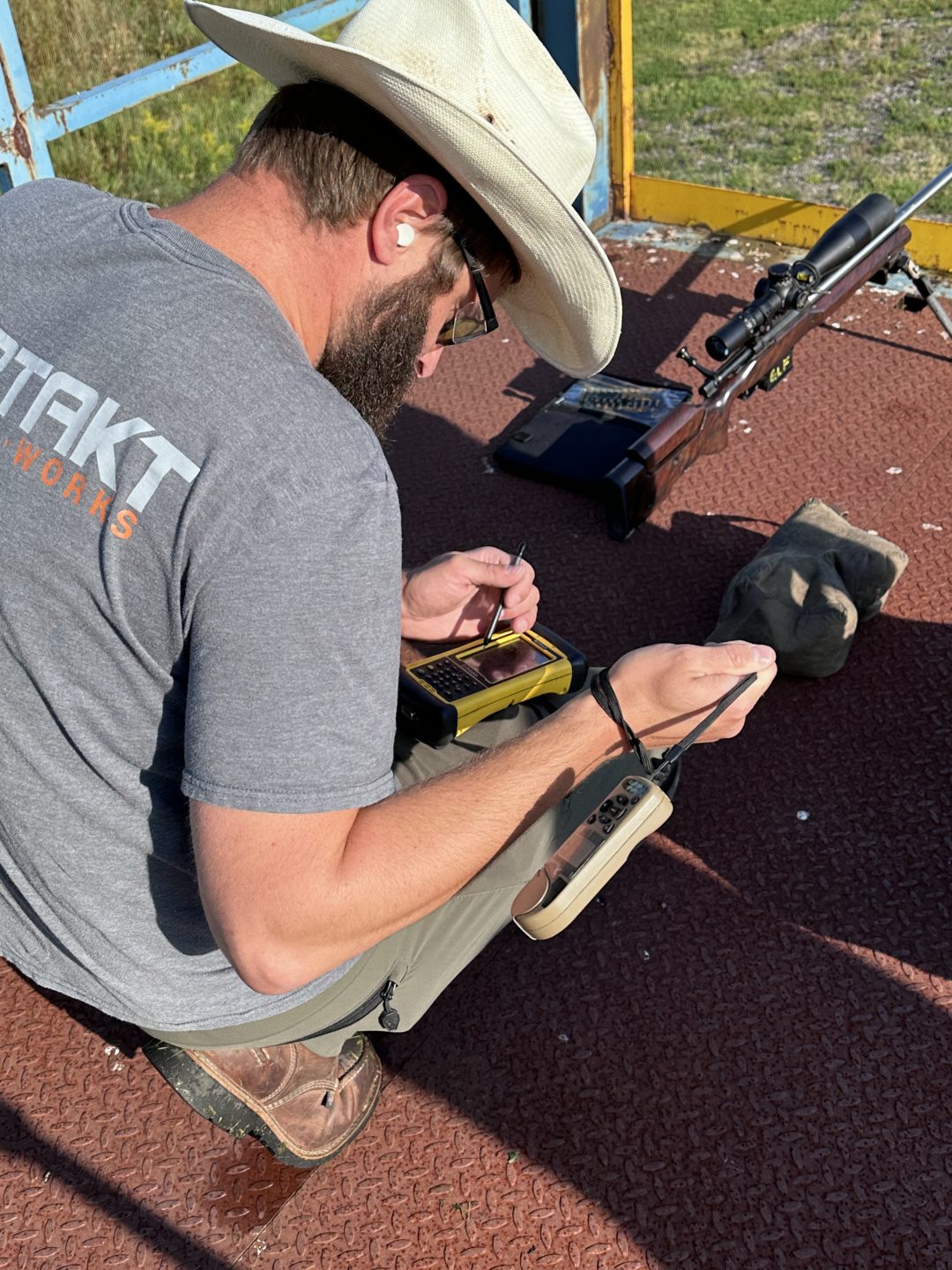
When this subject came up earlier in the class, Frank highlighted this process as the most
efficient way to build out a trued data set. While his classes had previously struggled to input
their DOPE, enter data into their calculators, and then spend a significant amount of time truing
up those apps and devices, the amount of time and round count required to attain “Try DOPE”
and “True DOPE” is greatly diminished by leveraging this tool.
With that in mind, I wanted to validate the formula Frank had set forth, to see if any average
Joe could DOPE out their rifle using data gathered at your typical public 200 or 300 local rifle
range.
Using the worksheet supplied, I entered the calculations for my holdover at 200 yards. Rather
than engaging the target to develop our DOPE, Frank had us engaging an orange waterline
spray painted across the midpoint of the steel. This exercise forced us to place additional focus
on precision from a vertical dispersion viewpoint, engaging each target with 3+ rounds to
validate these findings with a sample size of some measure of significance.
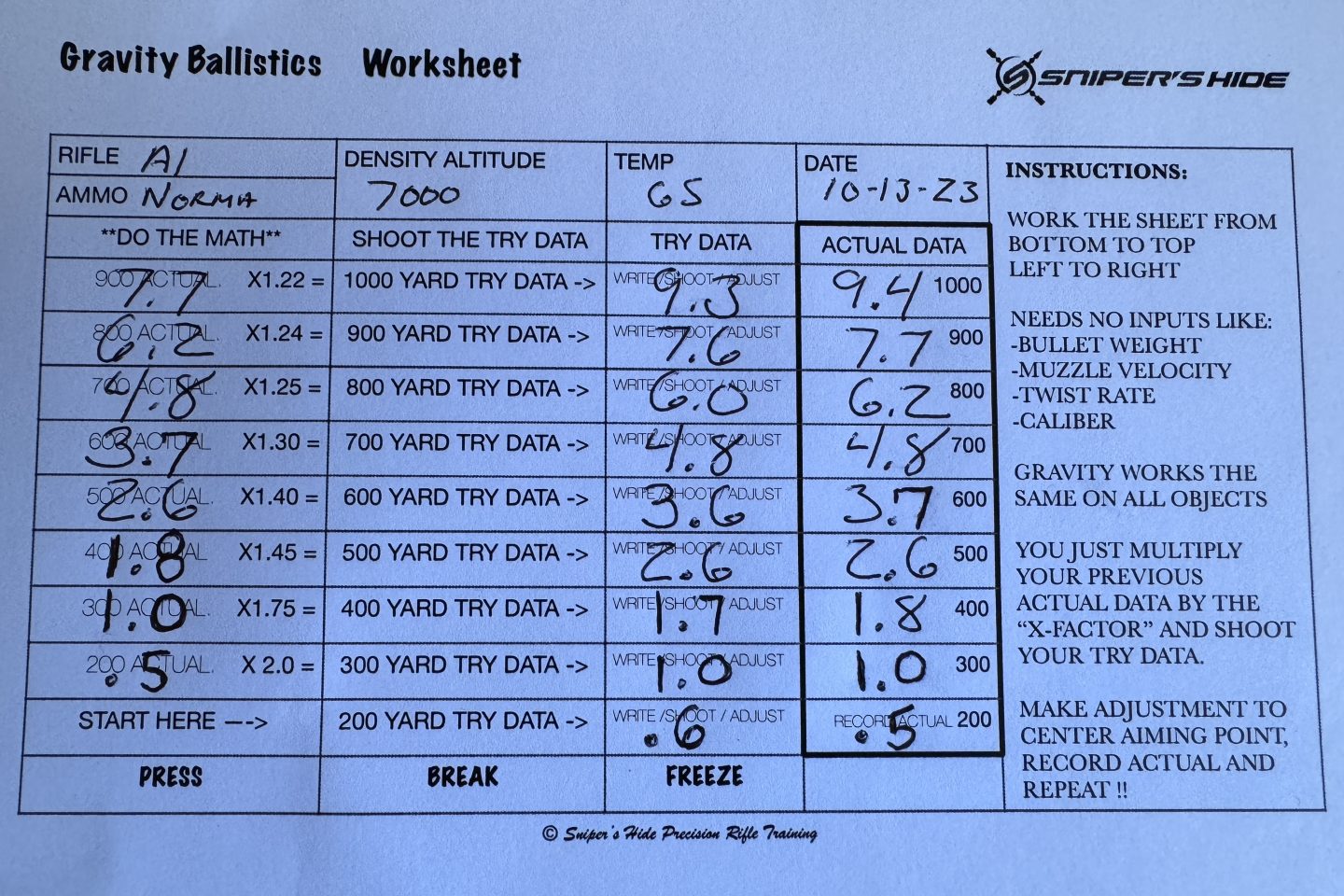
Once we established our “X DOPE” at 200 yards, we crunched the (very simple) numbers
outlined on the Gravity Ballistics worksheet, verifying that data by engaging a target at 300
yards. All three impacts were spot on at the waterline, proving out our “True DOPE”. We then
repeated this process at 400, 500, 600, 700, 800, 900, and 1,000 yards, validating and
developing our “True DOPE”. We very quickly discovered that the math provided through the
Gravity Ballistics formula was spot on (within .1 mil) throughout the entire course of fire!
Gravity Ballistics: Truing DOPE with your Ballistic Calculator
We closed the day with truing up our DOPE with our Kestrel Weather Meters. Frank highlighted
four key distances that aid in validating the “Target” portion of the WTF approach to long range
marksmanship.
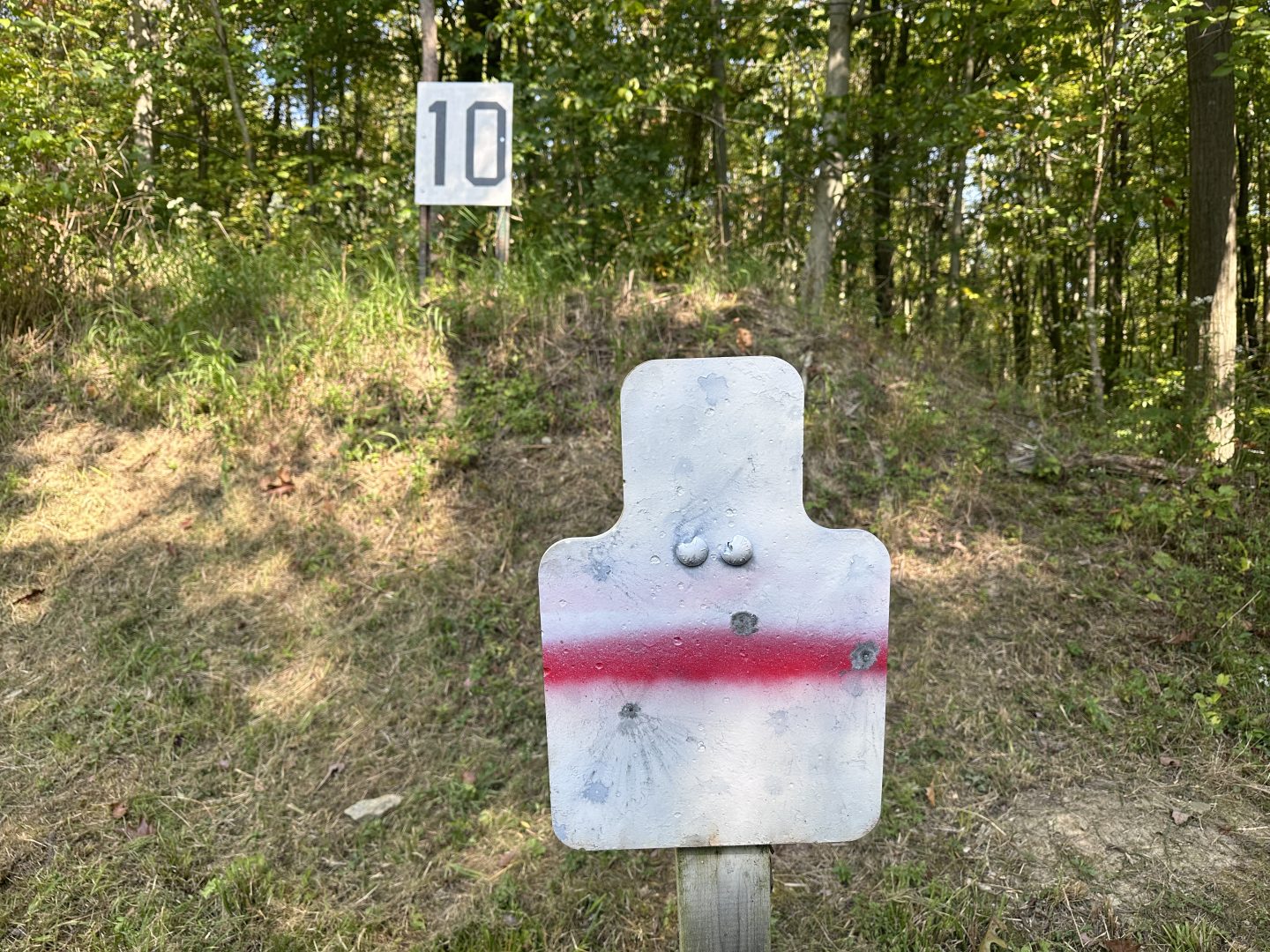
We first established the data at 100 yards (our zeroing distance). We then used the value
delivered at 300 yards as our base value (generating our “Try DOPE”). By leveraging the
holdover value at 600 we were able to extrapolate our projectile velocity, with the 800 yard
DOPE serving to identify our Ballistic Coefficient.
By aligning our True DOPE with those four data points, we were able to successfully take the
guesswork out of dialing in on a ballistic coefficient or requiring the use of a chronograph.
The level of simplicity in this approach was astounding, and we closed with a brief conversation
on how similar opportunities exist with reduced range solutions (for rimfire rifles) and wind
measurement (Frank is working on something along these lines with Chris Way).
At this point we headed back to our hotels to drop off our gear and get cleaned up, before
meeting up at a local tavern for dinner and cocktails, where we discussed the day’s events,
shared some stories, and got a brief download on the next day’s plans.
Day Two of the Gravity Ballistics Class – Practical Fundamentals of Precision Rifle
Marksmanship
The second day of the class deviated a bit from Frank’s standard range exercises. We quickly
discovered that this is normal, in that the needs of the students tend to vary depending on their
geography and discipline. Folks in Alaska may be taking his class to train up for an upcoming
hunt, students out west may be preparing for an NRL Hunter match, while the East Coast
students may be looking to run more barricade practice for PRS.
Garrett and I felt we could use a little additional instruction on tripod shooting, so Frank and
Laura embarked upon an impromptu “hip pocket” style class highlighting some of the recent
advances in tripod technology and technique. This was a great learning experience for Garrett
and I, since it had been quite some time since we had invested in tripod equipment.
Frank led with a brief period of instruction on rifle positioning and body alignment (placing the
rifle at mid-chest level, buttstock support techniques when engaging targets off of a separate
barricade), as well as a demonstration in ball head tension adjustment (shifting from 75% to
50% once our natural point of aim was established). Once Garrett and I got behind the tripod,
we dialed in on 6” gongs at 418 yards, consistently getting hits with Frank’s setup.
While Garrett and my tripod setups were certainly serviceable in getting impacts on target,
Frank’s tripod provided us with better ergonomics, quicker engagement, and the ability to
better spot hits and misses.
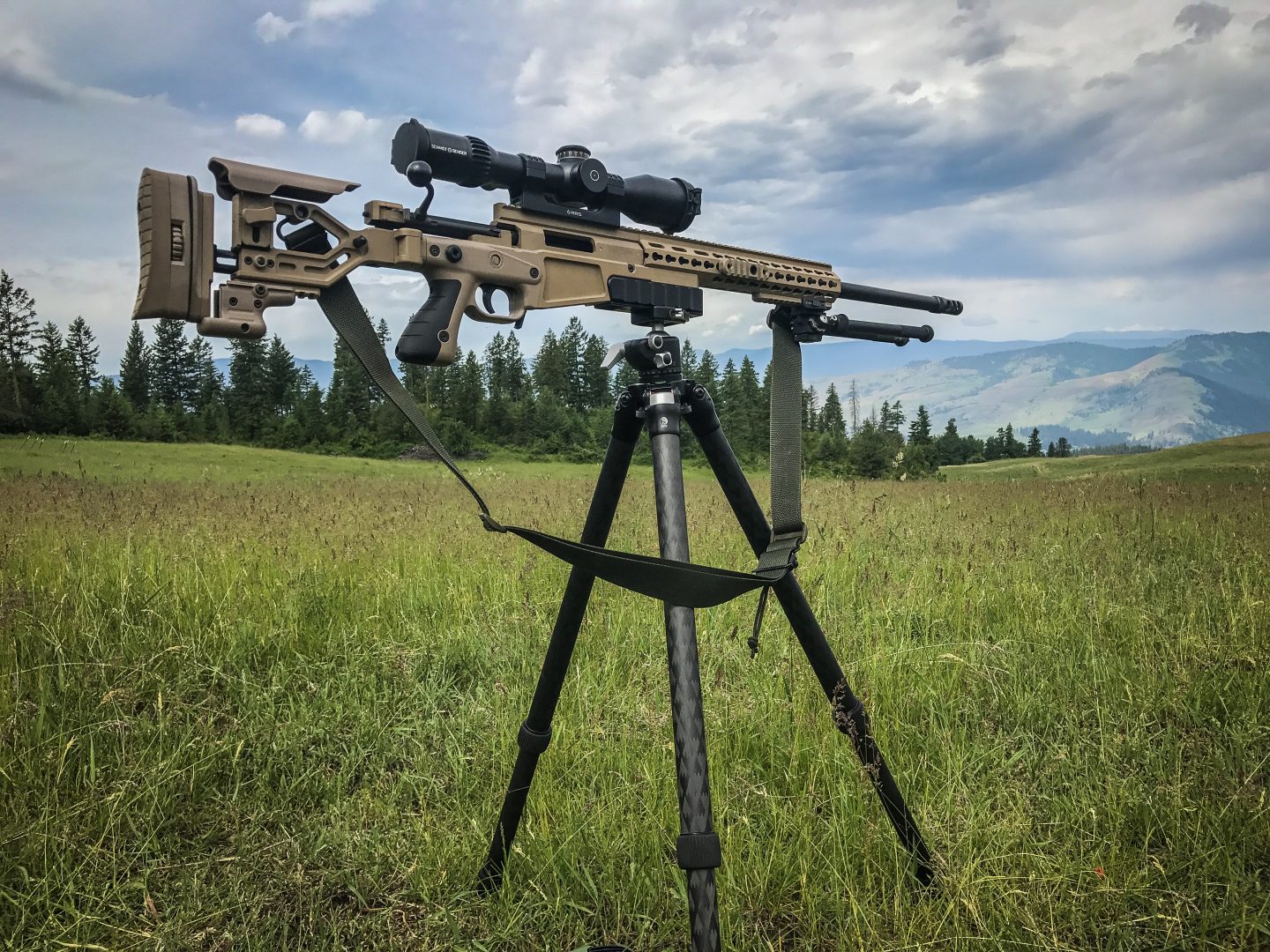
We then shifted from tripod work to barricade practice, discussing bag positioning,
developments in bag design (fill, size, etc.), and spent some time engaging targets at a variety of
distances.
The day closed with a brief wind reading session, as we made our way back to an elevated
platform behind our previous firing line, engaging targets 1,100 yards distant. I was a bit
surprised by how well the 6mm GT cut the wind compared to some of the other cartridges I was
previously accustomed to (6.5 Creedmoor and .308 Win), providing me with a newfound
respect and understanding of why many of the newer 6mm cartridges have taken the PRS
world by storm these past few years.
After we wrapped up the Day 2 long-range course of fire, Garrett and I wished Frank and Laura
a farewell, embarking on the long drive back to Menomonee Falls, WI. If you’re a new or
experienced shooter, I’d highly recommend taking one of these classes put on by the Sniper’s
Hide cadre. For new shooters, you can go from bringing a precision rifle with no data to
effectively engaging targets out to 1,000 yards in less than a single day’s time.
While there are some upfront costs with travel and class enrollment, this kind of experience
serves to save new shooters a full year or more in troubleshooting and getting started in the
precision rifle game (along with thousands of dollars in rounds wasted refining your technique).
It also provides a great opportunity for more seasoned shooters and competitors to diagnose
issues that are likely costing them valuable points each match (or game harvested, for those
actively engaged in the long-range hunting community).

For a full list of upcoming Sniper’s Hide classes, sign up here!
Button: 2024 Classes

